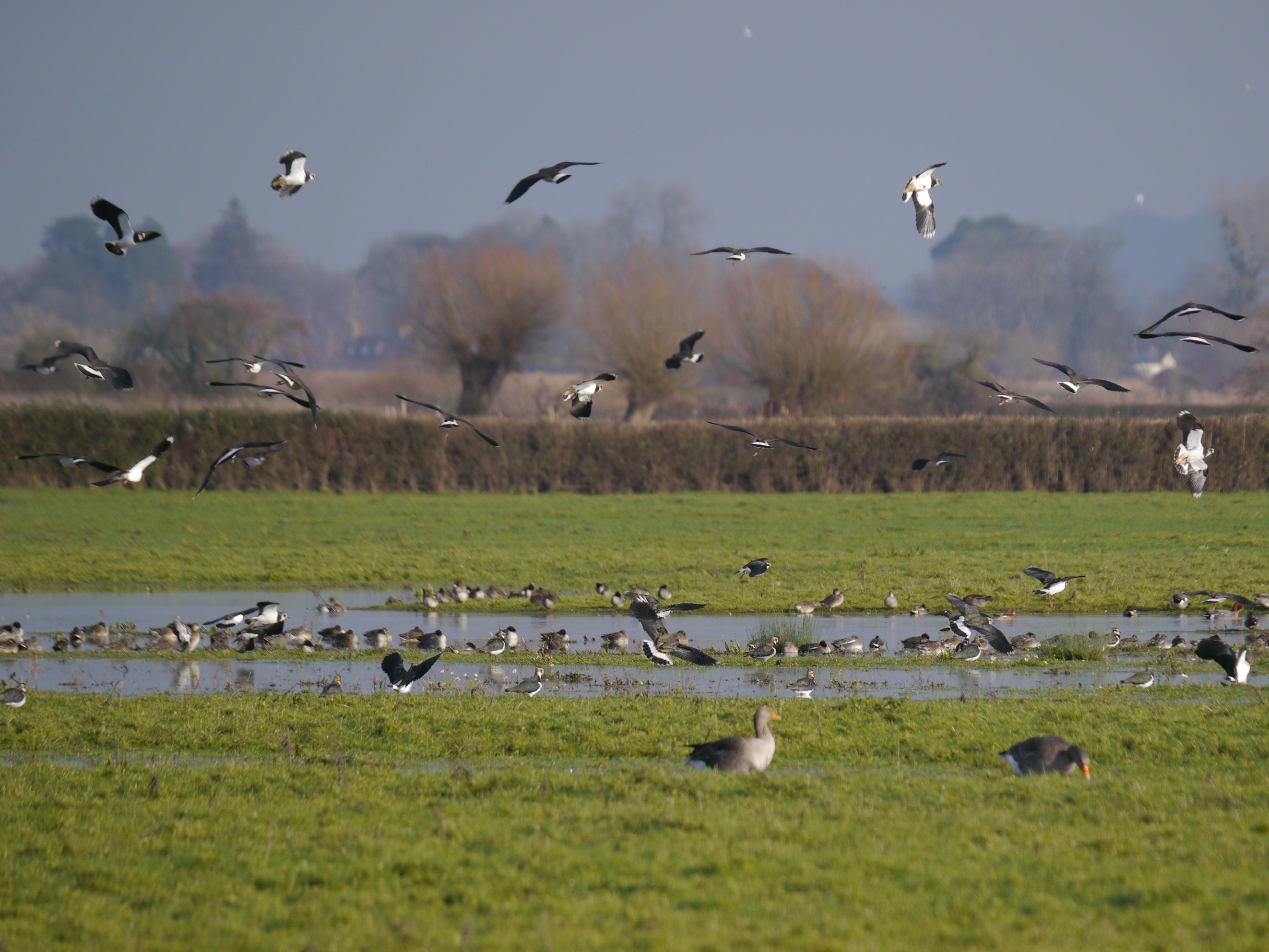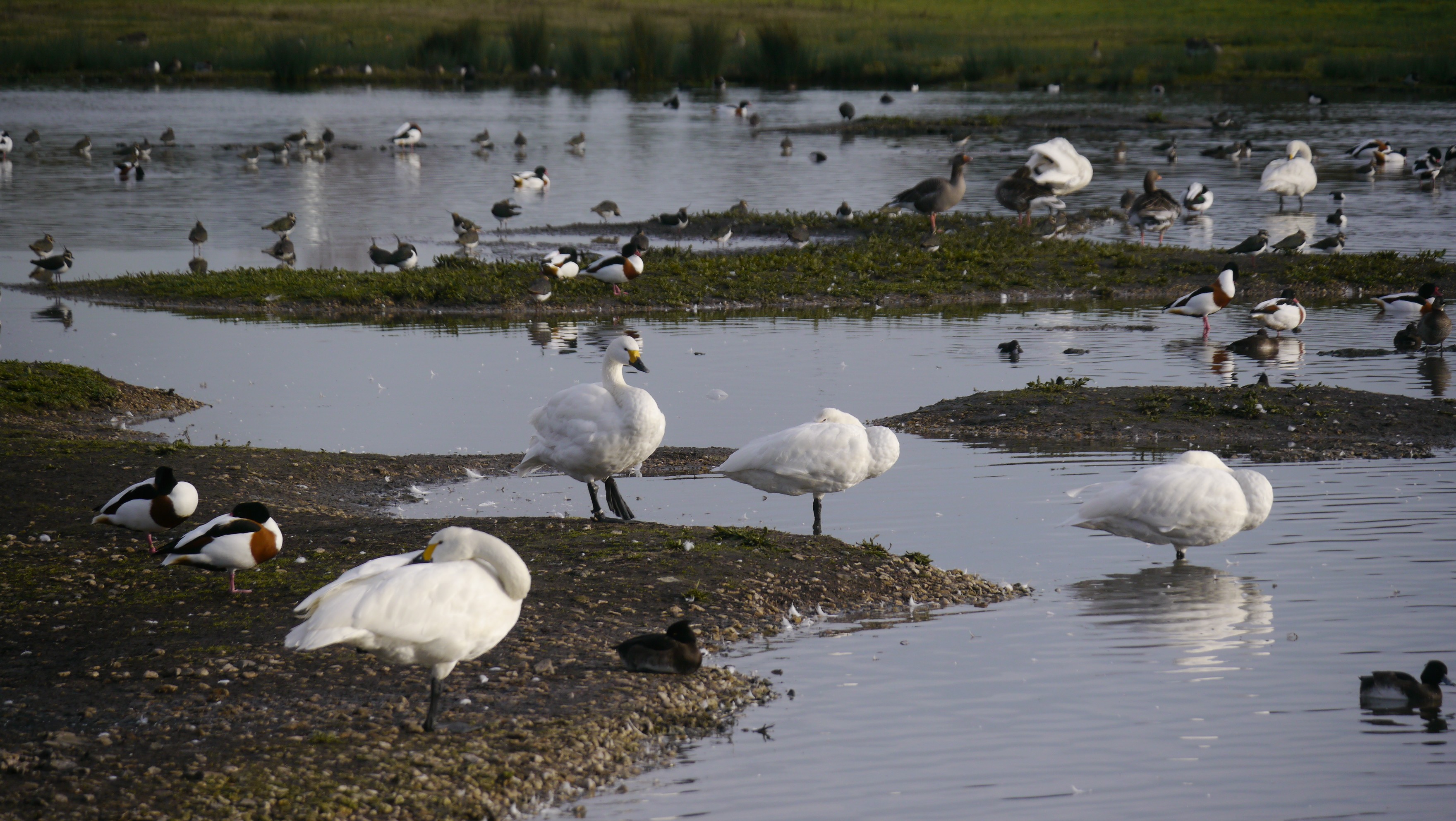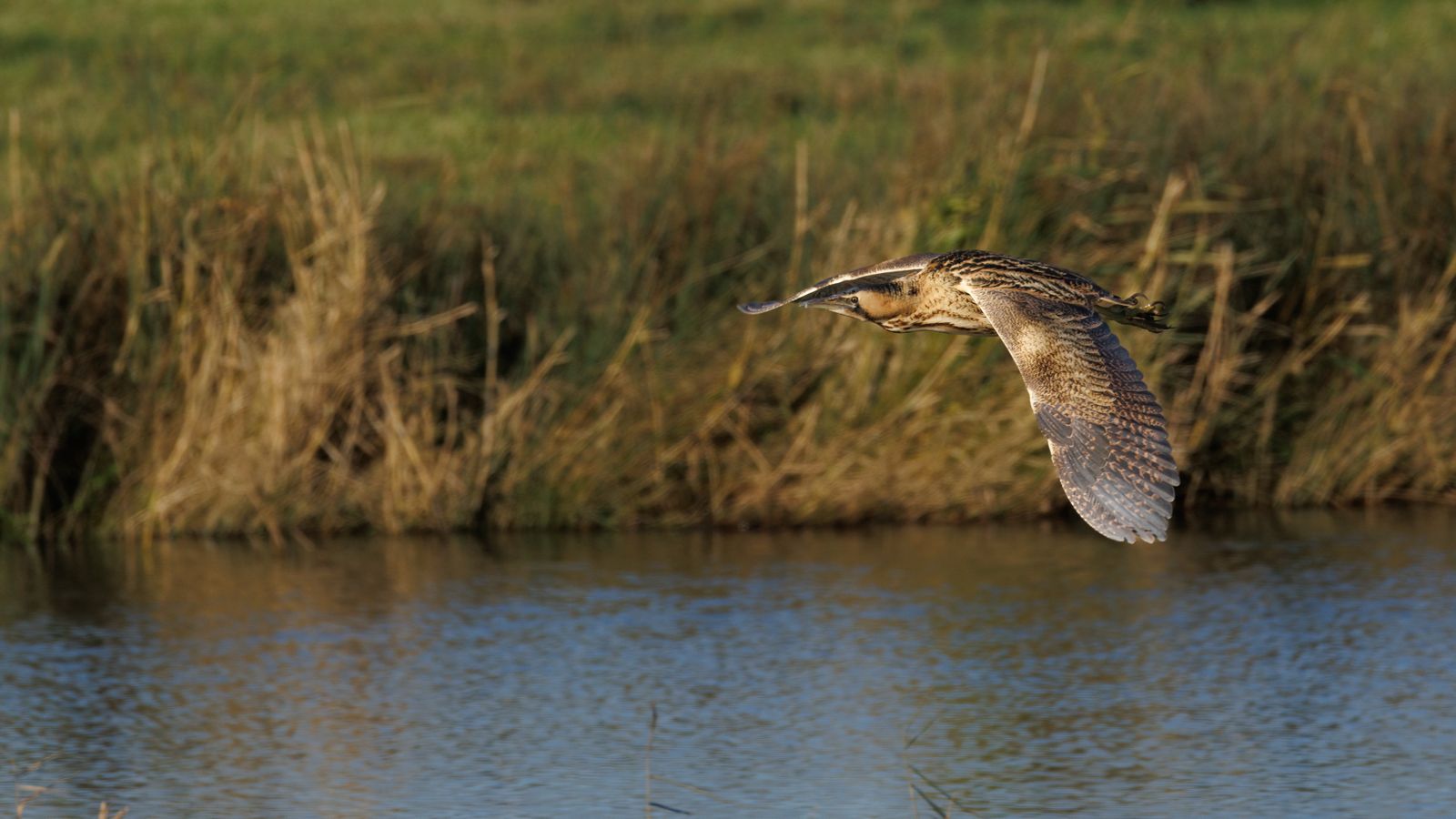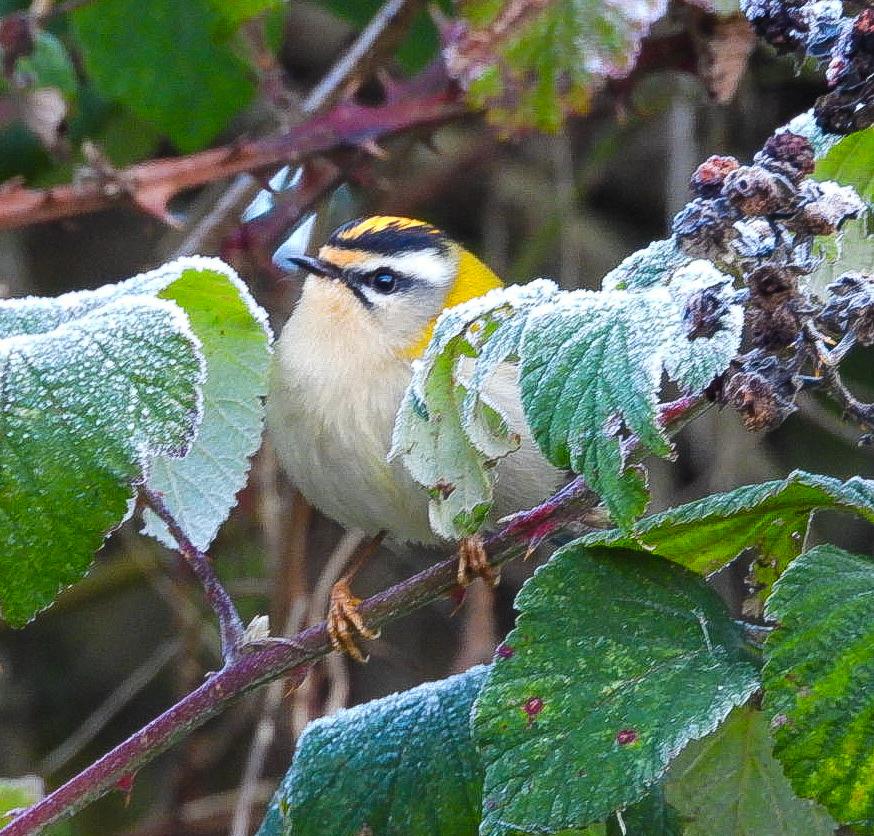Brief return of the Bonaparte's
The Bonaparte's Gull made a brief return on Wednesday as other signs of Spring are on show
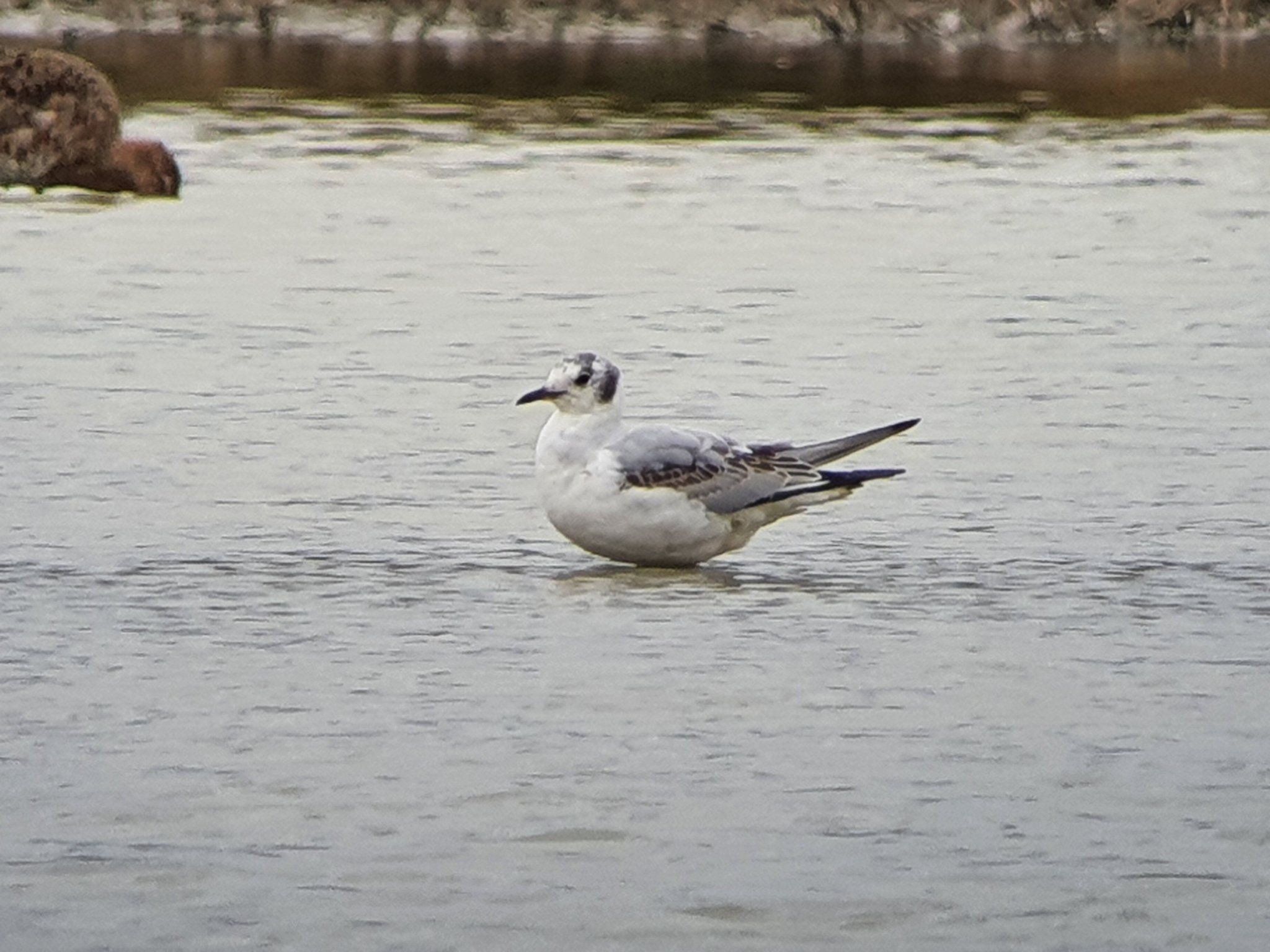
The Bonaparte's Gull made a brief return on Wednesday, dropping in early morning as it presumably left the roost on the estuary. The bird was present until at least lunchtime but then not seen again.
Other signs of Spring are starting to show, with a few migrant birds around the reserve and the first of the earlier flowering plants starting to put on a show. Our work has also taken a shift away from winter tasks with our eyes now fixed on a hopeful reopening date of 12th April. Keep an eye on the WWT website for the latest information here.
This week the team has been upgrading the Estuary Walkway path by building up revetments along the ditch to prevent erosion and provide a more level surface for all users. Our hides are keeping a spruce-up with many being repainted or coated with wood preservative, and we're making good use of all the material harvested from the Withy Bed with willow screens being replaced around the reserve at viewpoints.
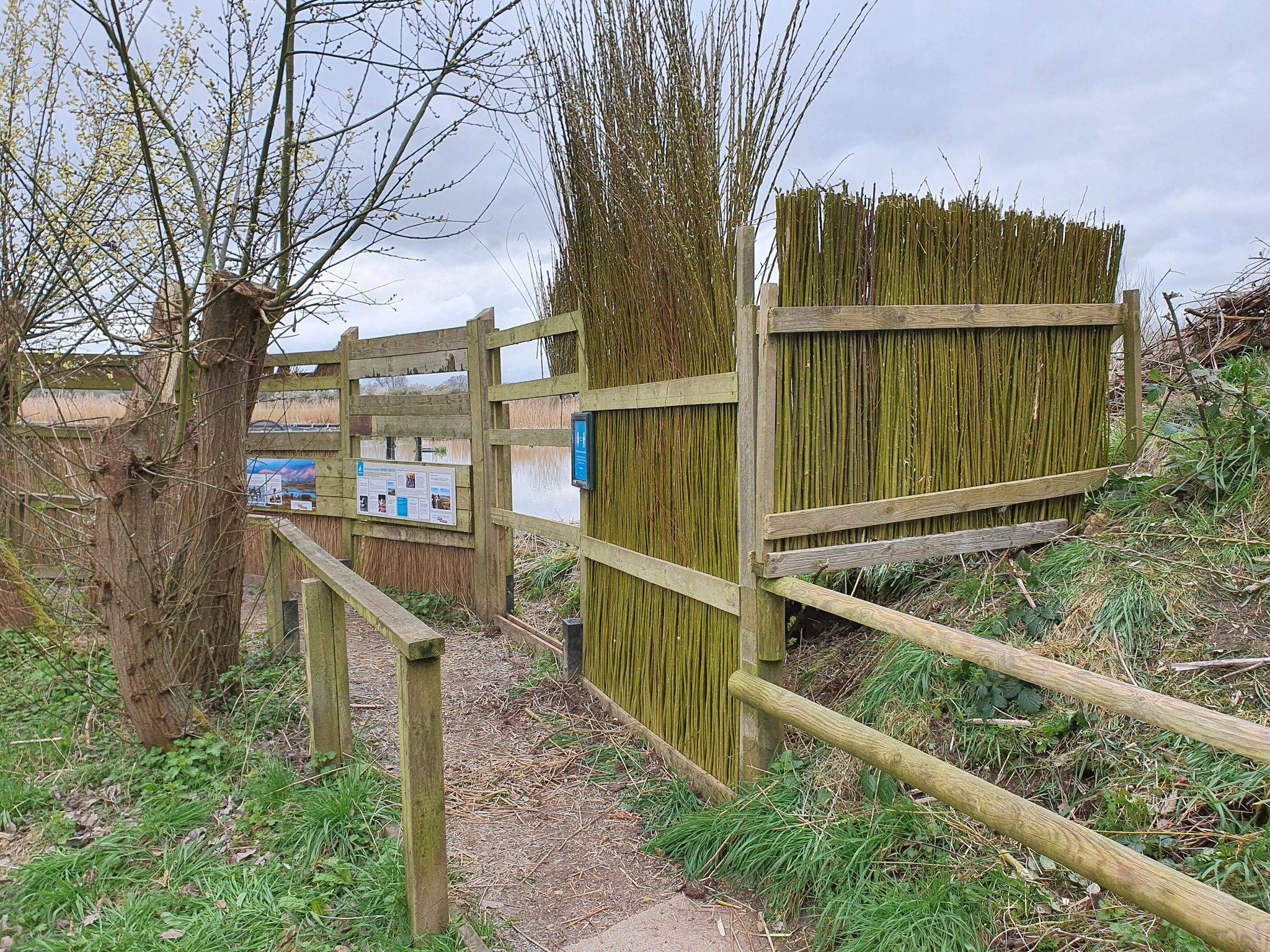
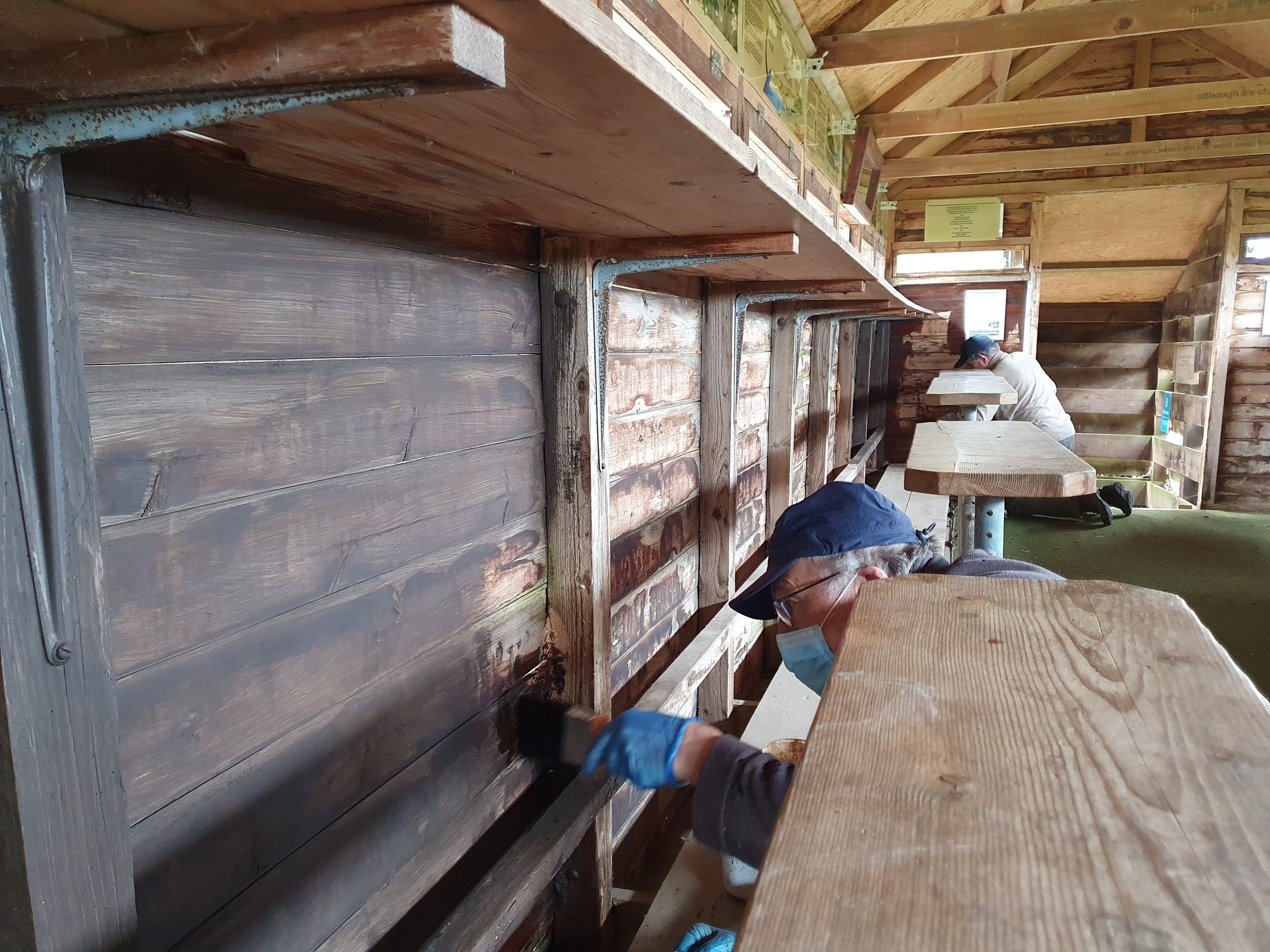
Crane update
Most of our pairs are back on their breeding territories but not showing many signs of nest building or courtship. Vocal birds are heard most days, with this usually being either Kia & Chocolo or Ruby and her unringed partner as they are closest to the Centre and easily heard whilst we're out working on the reserve. Wendy & Albert have been around their territory in the north, with Monty & Evie around the roadside fields and the Dumbles. In the coming weeks the birds will hopefully start to settle down and begin nest building.
Kingfisher update
Our two pairs continue to be busy around their nest sites and we hope they will settle on a chosen nest burrow and lay eggs towards the end of April. After laying there will be a quiet period, but by the end of May we should have a very busy period with adults feeding chicks.
Wildfowl
Two of our main breeding species - Shelduck and Tufted Duck - remain in good numbers, with around 100 Pintail still coming to the Rushy for the morning feed. We extend the feeding period into March after the Bewick's Swans have gone to help condition the duck before they too depart on migration. One species that has already started that migration are the Pochard, with only eight birds now left on the main area of the reserve.
There was no furthe sign of the flock of Dark-bellied Brent Geese picked up on the WeBS count last Sunday, but the Cackling Goose remains and even dropped in to the South Lake in search of company as numbers of our other goose species start to drop as they leave for breeding sites. Our flock of White-fronted Geese have also been quite mobile this week, moving between the north and south of the reserve. Numbers have dropped to around 120 birds and we expect to see more departures until all birds have gone by early April.
Several Goldeneye have been seen this week, again mainly with the captive birds in our Living Collection or out on the South Lake.
Waders
Avocet numbers held up all week at around 48 birds with a fresh arrival on Thursday night bringing the flock up to 70, with most on the South Lake. The Black-tailed Godwit flock has been roosting here with their numbers building, with at least 269 counted this morning (Friday 19th). Amongst them this week have been up to two Bar-tailed Godwit - a treat as they usually stay out on the estuary. Check out this great photo below from our volunteer Lisa. A few Dunlin remain but it looks as though the Golden Plover have now all left and our attention turns to other Spring migrants in the coming weeks such as Ringed Plover, Sanderling, Turnstone and Knot.
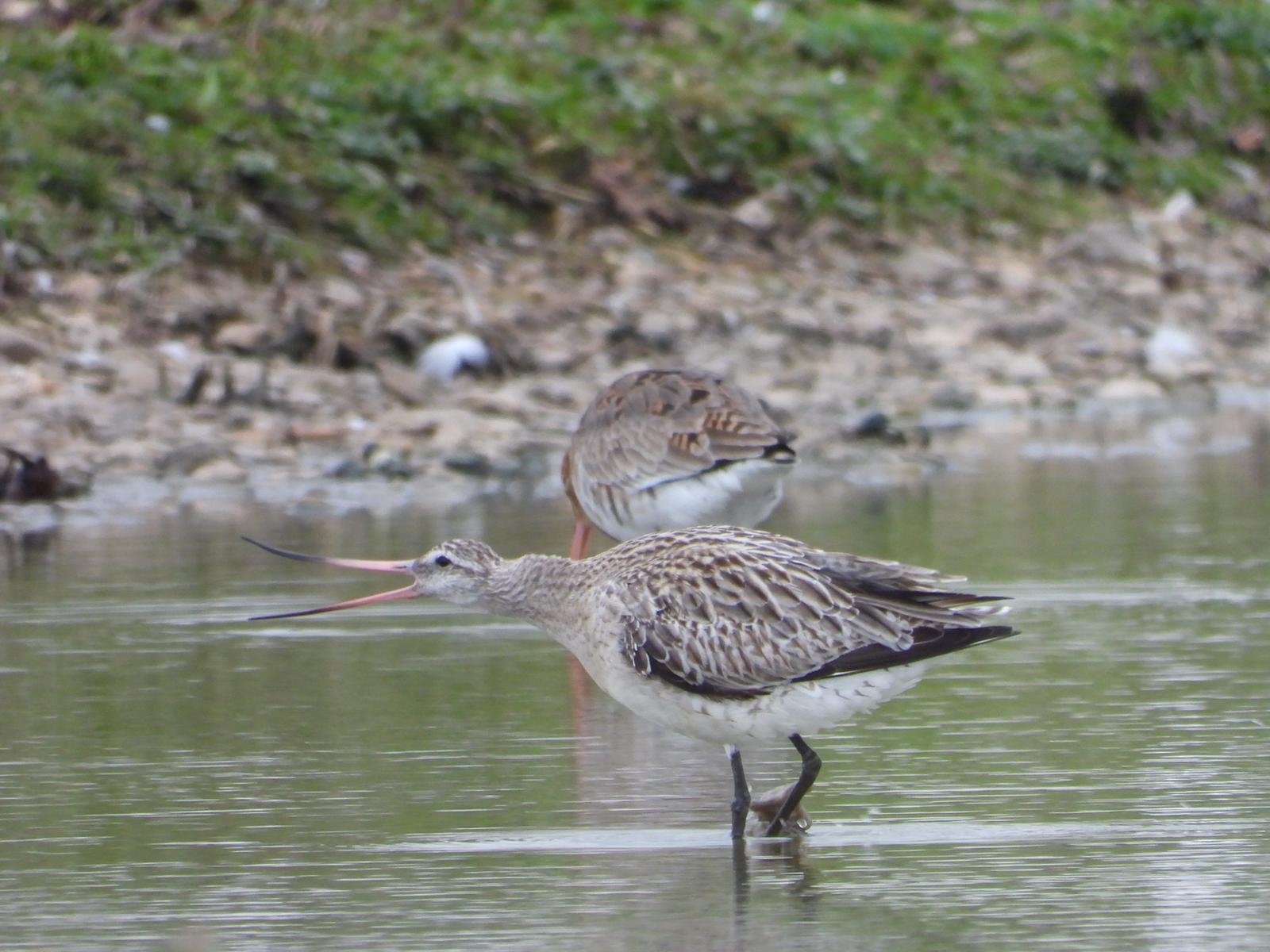
Other notable species
The nine Cattle Egret have continued to roost all week, dropping in to the South Lake with a few Little Egret for company. We've also seen a Great Egret return and it has been touring the reserve today (Friday 19th).
We've had regular sightings of Goshawk this week, possibly two different birds and mainly hunting the Tack Piece and Dumbles. There have also been a few sightings of Peregrine and Merlin too. A Merlin was seen this afternoon (Friday 19th) chasing a Dunlin, both gaining height until they were barely in view as they flew inland over the Kingfisher Hide. The Dunlin tried to double back but the agility of the Merlin won out and the bird dropped like a stone from the sky to feed on its prize.
